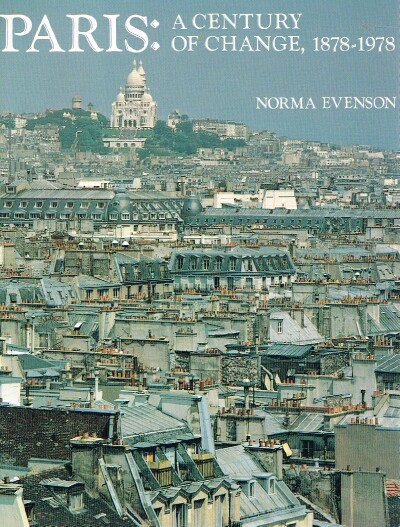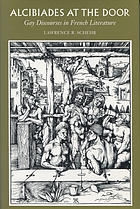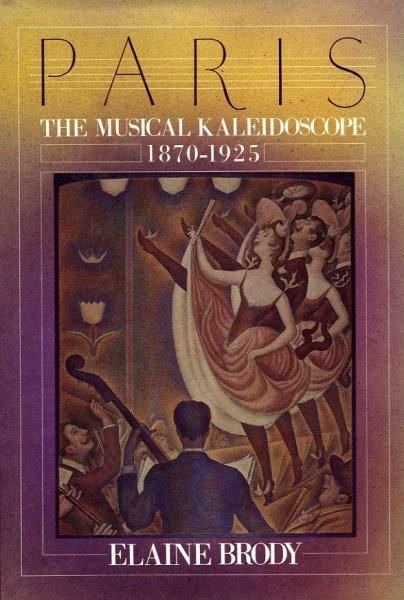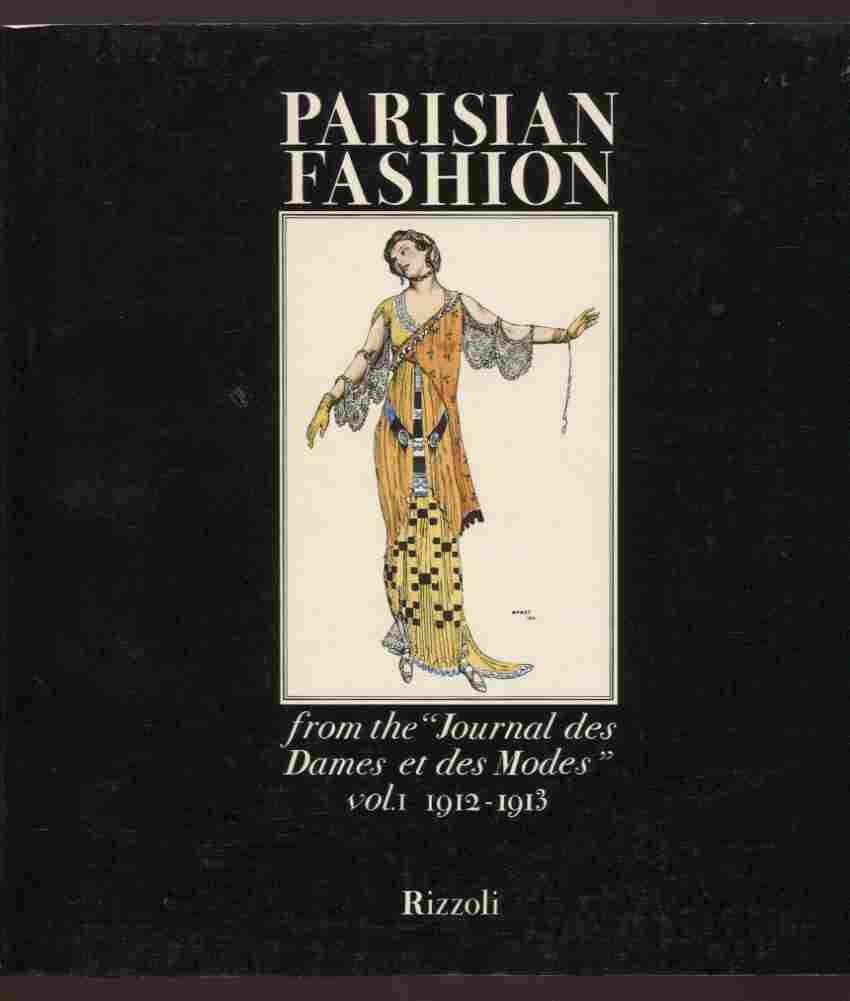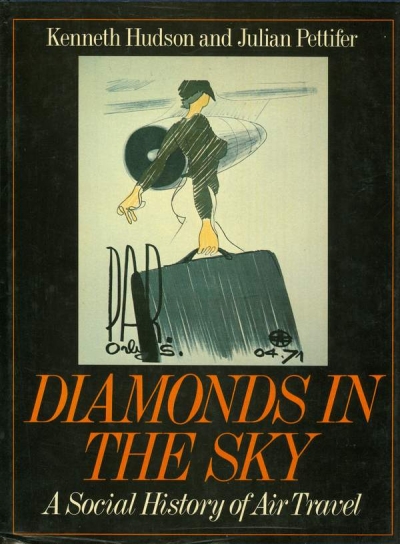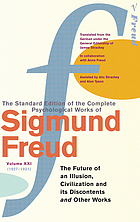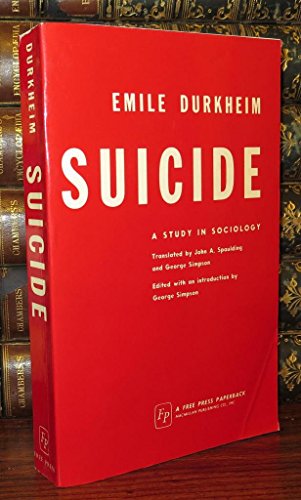Marcel Proust (1871-1922): Historical Context
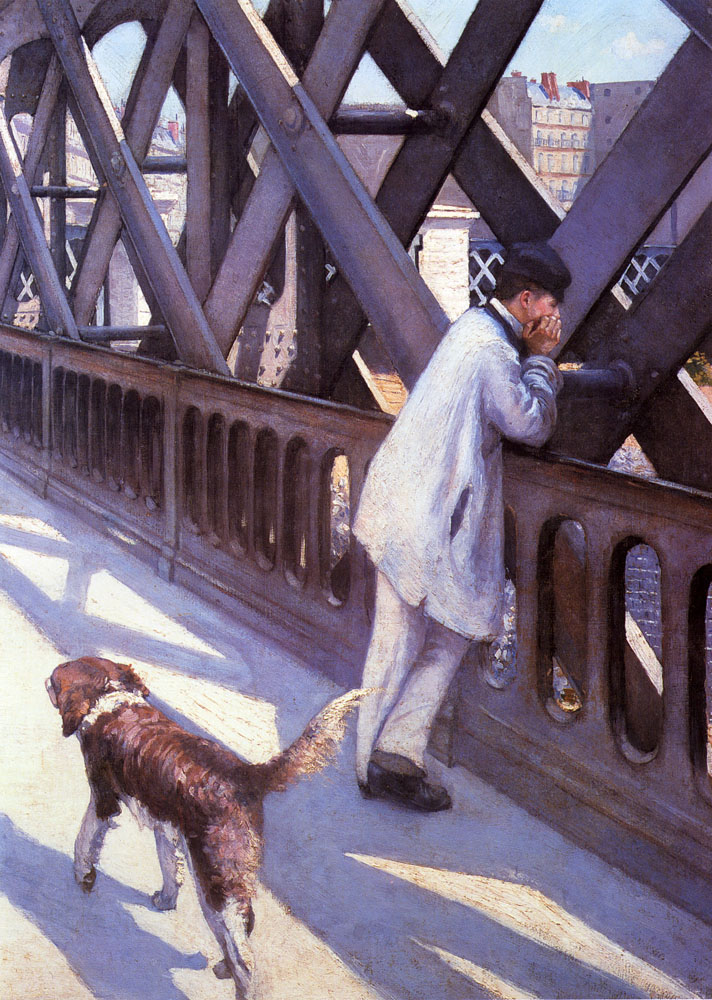 Proust lived in an era of radical change virtually unprecedented in European history. Born amidst the immediate aftermath of the Paris Commune in 1871, he observed a world in which relations between classes, races, and genders, between rulers and subjects, between center and margin, and between the arts and the sciences changed beyond recognition, either gradually or suddenly, as the traditional political, economic, and social structures of the European 19th century - imperialism, capitalism, middle-class morality - collided with the exigencies of an industrialized, technologized, and geopoliticized future. In the course of Proust's brief lifetime, automobiles replaced horses, electric light replaced fire, recorded and broadcast music replaced live performance, the telegraph and telephone replaced the presence of the human voice. At the same time, individual desires and appetites openly began to break the bounds of sexual propriety and moral respectability, marginalized and persecuted groups began to assert their rights, their dignity, and their clout in new ways, and colonized peoples around the world began to shake off the yoke of imperial exploitation. Above all, human bodies, hearts, and eyes began to open on a world that had gained unimaginable intensity, rapidity, and complexity overnight, in which the cultural and aesthetic vocabularies of even the immediate past had begun to ring hollow, and for which new colors, sounds, and syllables, new architectures and languages, had yet to be discovered. For his whole life, Proust himself lived in Paris, the undisputed cultural, economic, and political capital of Europe in the 19th century, and grew up in the wealthy and sophisticated milieu of the upper middle class, where he moved among lawyers, doctors, statesmen, and intellectuals. Classically educated, financially privileged, socially well-connected, and blessed with virtually limitless leisure, Proust looked out from the summit of European culture upon the bright prospect of a new age - even as this new light cast its first chilling shadow in the shape of world war, mechanized slaughter, and the profound destabilization of Western society that presaged the rise of fascism and the catastrophe of the Holocaust.
Proust lived in an era of radical change virtually unprecedented in European history. Born amidst the immediate aftermath of the Paris Commune in 1871, he observed a world in which relations between classes, races, and genders, between rulers and subjects, between center and margin, and between the arts and the sciences changed beyond recognition, either gradually or suddenly, as the traditional political, economic, and social structures of the European 19th century - imperialism, capitalism, middle-class morality - collided with the exigencies of an industrialized, technologized, and geopoliticized future. In the course of Proust's brief lifetime, automobiles replaced horses, electric light replaced fire, recorded and broadcast music replaced live performance, the telegraph and telephone replaced the presence of the human voice. At the same time, individual desires and appetites openly began to break the bounds of sexual propriety and moral respectability, marginalized and persecuted groups began to assert their rights, their dignity, and their clout in new ways, and colonized peoples around the world began to shake off the yoke of imperial exploitation. Above all, human bodies, hearts, and eyes began to open on a world that had gained unimaginable intensity, rapidity, and complexity overnight, in which the cultural and aesthetic vocabularies of even the immediate past had begun to ring hollow, and for which new colors, sounds, and syllables, new architectures and languages, had yet to be discovered. For his whole life, Proust himself lived in Paris, the undisputed cultural, economic, and political capital of Europe in the 19th century, and grew up in the wealthy and sophisticated milieu of the upper middle class, where he moved among lawyers, doctors, statesmen, and intellectuals. Classically educated, financially privileged, socially well-connected, and blessed with virtually limitless leisure, Proust looked out from the summit of European culture upon the bright prospect of a new age - even as this new light cast its first chilling shadow in the shape of world war, mechanized slaughter, and the profound destabilization of Western society that presaged the rise of fascism and the catastrophe of the Holocaust.
On this page you can discover a rich selection of resources in English on the most significant dimensions of Proust's historical context, arranged by broad topical areas. Each book listed below is linked to WorldCat, where you can discover library holdings for that item in your region. Resources within each gallery box are generally arranged from the newest to the oldest publications, left to right.
- France at the Fin-de-Siècle: History, Politics, Economics, Society covers the political and economic history of France as a nation in Proust's era.
- Paris, Capital of the Belle Epoque: Space, Sensation, Identity, Conflict covers the social, political, and material history of Paris in Proust's era.
- Modern Desires: Women, Gender, Bodies, Sexuality, Queerness, Morality covers all aspects of desire, the body, and intimate life in Proust's France.
- The Dreyfus Affair & the Jews of Modern France: Inside and/or Outside covers the most divisive sociopolitical conflict of Proust's time, with deep repercussions both within the world of his novel and modern France.
- Shock, Rush, and Uproar: Revolutions in French Culture covers the eventful social and cultural history of Proust's lifetime, including the vast upheavals in every branch of the arts.
- Grand Illusion: Origins, Course, Aftermath, and Legacy of World War I covers the general history of the Great War with focus on its significance for French society and culture.
- The First Technological Revolution covers the explosion of new and disruptive technologies that transformed Proust's world beyond recognition: the automobile, the bicycle, photography, radio, and the telephone, among others.
- Symptoms of the Age: Medicine & Psychiatry covers the new scientific understandings of the human mind and body that were emerging in Proust's time.
- Thought at Century's End: Perception, Understanding, Selfhood, Society covers fundamental works by major philosophers and social thinkers of Proust's era and introductory guides to their thought.
With the defeat of Napoleon Bonaparte at the Battle of Waterloo in June 1815, the next two centuries for France would be tumultuous. Critically acclaimed historian and political commentator Jonathan Fenby provides an expert and riveting journey through this period as he recounts and analyzes the extraordinary sequence of events of this period from the end of the First Revolution through two others, a return of Empire, three catastrophic wars with Germany, periods of stability and hope interspersed with years of uncertainty and high tensions. As her cross-channel neighbor Great Britain would equally suffer, France was to undergo the wrenching loss of colonies in the post-Second World War era as the new modern world we know today took shape. Her attempts to become the leader of the European Union was a constant struggle, as was her lack of support for America in the two Gulf Wars of the past twenty years. Alongside this came huge social changes and cultural landmarks, but also fundamental questioning of what this nation, which considers itself exceptional, really stood―and stands―for. That saga and those questions permeate the France of today, now with an implacable enemy to face in the form of Islamic extremism which so bloodily announced itself this year in Paris. Fenby will detail every event, every struggle, and every outcome across this expanse of 200 years. It will prove to be the definitive guide to understanding France.
In the aftermath of the Franco-Prussian War of 1870–71, a defeated and humiliated France split into cultural factions that ranged from those who embraced modernity to those who championed the restoration of throne and altar. This polarization—to which such iconic monuments as the Sacre-Coeur and the Eiffel Tower bear witness—intensified with a succession of grave events over the following decades: the crash of an investment bank founded to advance Catholic interests; the failure of the Panama Canal Company; the fraudulent charge of treason brought against a Jewish officer, Alfred Dreyfus, which resulted in a civil war between his zealous supporters and fanatical antagonists. In this brilliant reconsideration of what fostered the rise of fascism and anti-Semitism in twentieth-century Europe, Frederick Brown chronicles the intense struggle for the soul of a nation, and shows how France’s deep fractures led to its surrender to Hitler’s armies in 1940.
 Children of the Revolution: The French, 1799-1914 by Robert Gildea. London: Penguin Books, 2008.
Children of the Revolution: The French, 1799-1914 by Robert Gildea. London: Penguin Books, 2008.
For those who lived in the wake of the French Revolution, from the storming of the Bastille to Napoleon’s final defeat, its aftermath left a profound wound that no subsequent king, emperor, or president could heal. This book follows the ensuing generations who repeatedly tried and failed to come up with a stable regime after the trauma of 1789. The process encouraged fresh and often murderous oppositions between those who were for, and those who were against, the Revolution’s values. Bearing the scars of their country’s bloody struggle, and its legacy of deeply divided loyalties, the French lived the long nineteenth century in the shadow of the revolutionary age. Despite the ghosts raised in this epic tale, Robert Gildea has written a richly engaging and provocative book. His is a strikingly unfamiliar France, a country with an often overwhelming gap between Paris and the provinces, a country torn apart by fratricidal hatreds and a tortured history of feminism, the site of political catastrophes and artistic triumphs, and a country that managed—despite a pervasive awareness of its own fall from grace—to fix itself squarely at the heart of modernity. Indeed, Gildea reveals how the collective recognition of the great costs of the Revolution galvanized the French to achieve consensus in a new republic and to integrate the tumultuous past into their sense of national identity. It was in this spirit that France’s young men went to the front in World War I with a powerful sense of national confidence and purpose.
A monumental collective endeavour by some of France's most distinguished intellectuals, this three-volume collection of essays explores how and why certain places, events, and figures became a part of France's collective memory, and reveals the intricate connection between memory and history.
This book vividly portrays the City of Light during the fabulous 1920s, les Années folles, when Parisians emerged from the horrors of war to find that a new world greeted them—one that reverberated with the hard metallic clang of the assembly line, the roar of automobiles, and the beat of jazz. Mary McAuliffe traces a decade that saw seismic change on almost every front, from art and architecture to music, literature, fashion, entertainment, transportation, and, most notably, behavior. The epicenter of all this creativity, as well as of the era’s good times, was Montparnasse, where impoverished artists and writers found colleagues and cafés, and tourists discovered the Paris of their dreams. Paris of the 1920s unquestionably sizzled. Yet rather than being a decade of unmitigated bliss, les Années folles also saw an undercurrent of despair as well as the rise of ruthless organizations of the extreme right, aimed at annihilating whatever threatened tradition and order—a struggle that would escalate in the years ahead.
At the beginning of the twentieth century, Paris was the cosmopolitan hub of Europe and home to a vast number of foreigners – including the writers, painters, sculptors, and musicians who were creating works now synonymous with modernism itself, such as Les Desmoiselles d’Avignon, The Rite of Spring, and Ulysses. The situation at the end of the period, however, could not have been more different: even before the violence of the Second World War, the cosmopolitan avant-garde had largely abandoned Paris, driven out by nationalism, xenophobia, and intolerance. This book investigates this tense and transitional moment for both modernism and European multiculturalism by looking at the role of foreigners in Paris’s artistic scene. Examining works of literature, sculpture, ballet and performing arts, music, and architecture, Ihor Junyk combines cultural history with contemporary work in transnationalism and diaspora studies. Junyk emphasizes how émigré artists used radical new forms of art to resist the culture of virulent nationalism taking root in France, and to articulate new forms of cosmopolitan identity.
During the années folles following World War I, Paris underwent a creative fever that brought artists and intellectuals from around the world to the City of Light. The bohemian charms of Montparnasse attracted artists such as Picasso, Chagall, and Giacometti, while a vibrant café culture provided a forum for disputes between Dadaists and Surrealists and gave rise to a group of expatriate writers. The creative energy was all-encompassing, establishing Paris as the epicenter of new trends in the arts, a position it would occupy until World War II. This newest title in a celebrated series addresses such diverse topics as aesthetics, literature, the changing role of women, and the transformation of avant-garde culture.
Distinguished historian John Merriman maintains that the Age of Modern Terror began in Paris on February 12, 1894, when anarchist Emile Henry set off a bomb in the Café Terminus, killing one and wounding twenty French citizens. The true story of the circumstances that led a young radical to commit a cold-blooded act of violence against innocent civilians makes for riveting reading, shedding new light on the terrorist mindset and on the subsequent worldwide rise of anarchism by deed. Merriman’s fascinating study of modern history’s first terrorists, emboldened by the invention of dynamite, reveals much about the terror of today.
This work offers a glittering look at fin-de-siècle Paris through the three women who inspired Proust's supreme fictional character, the Duchesse de Guermantes. The three superstars of turn-of-the-century Parisian high society were Geneviève Halévy Bizet Straus; Laure de Sade, Comtesse Adhéaume de Chevigné; and Élisabeth de Riquet de Caraman-Chimay, Comtesse Greffulhe. All unhappily married, these women sought fulfillment by reinventing themselves as icons, and their fabled salons inspired generations of artists, composers, and writers. Caroline Weber takes us into these women's glamorous lives, showing us not only the balls, hunts, dinners, court visits, and nights at the opera but also the loneliness, rigid social rules, and arranged marriages that constricted them. Marcel Proust, as a young law student in 1892, first worshipped the three from afar and later met them and immortalized them in his celebrated composite character in In Search of Lost Time.
Over the course of several centuries, Western masculinity has successfully established itself as the voice of reason, knowledge, and sanity―the basis for patriarchal rule―in the face of massive testimony to the contrary. This book boldly challenges this triumphant vision of the stable and secure male by examining the central role played by modern science and medicine in constructing and sustaining it. Mark Micale reveals the hidden side of this vision, that is, the innumerable cases of disturbed and deranged men who passed under the eyes of male medical and scientific elites from the seventeenth century onward. Since ancient times, physicians and philosophers had closely observed and extravagantly theorized female weakness, emotionality, and madness. What these male experts failed to see―or saw but did not acknowledge―was masculine nervous and mental illness among all classes and in diverse guises. While cultural and literary intellectuals pioneered new languages of male emotional distress, European science was invested in cultivating and protecting the image of male, middle-class detachment, objectivity, and rationality despite rampant counter-evidence in the clinic, in the laboratory, and on battlefields. The reasons for suppressing male neurosis from the official discourses of science and medicine as well as from popular view range from the personal and psychological to the professional and the political. They make for a history full of profound silences, omissions, and amnesias. Now, however, under the greatly altered circumstances of today’s gender revolution, Micale’s work allows this story to be heard.
Eight gay men wrote their autobiographies in French between 1845 and 1905; some of them reflected on their childhood, adolescence, and adulthood, others provided brief impressions of their loves and desires. A few of them dramatized their lives following contemporary theatrical and fictional models, while others wrote for medical doctors, who used the men's writings as case studies to illustrate their theories on sexual deviance. In some instances the doctors’ extensive interpretations cannot be separated from the men's own stories, but in others the authors speak for themselves. The remarkable autobiographies in this book, translated into English for the first time here, give present-day readers a rare glimpse into otherwise shrouded existences. They relate the experiences of a man about town, a cross-dressing entertainer, a troubled adolescent, and two fetishists, among others. The autobiographies will interest a wide audience today at a time when readers are seeking new views on the lives of ordinary men and women from the past, when gay people are looking for the roots of their communities, and when scholars are trying to understand the formation of sexual identities at a crucial moment in the history of modern Europe.
Solitary Sex: A Cultural History of Masturbation by Thomas W. Laqueur. New York: Zone Books, 2004.
At a time when almost any victimless sexual practice has its public advocates and almost every sexual act is fit for the front page, the easiest, least harmful, and most universal one is embarrassing, discomforting, and genuinely radical when openly acknowledged. Masturbation may be the last taboo. But this is not a holdover from a more benighted age. The ancient world cared little about the subject; it was a backwater of Jewish and Christian teaching about sexuality. In fact, solitary sex as a serious moral issue can be dated with a precision rare in cultural history; Laqueur identifies it with the publication of the anonymous tract Onania in about 1722. Masturbation is a creation of the Enlightenment, of some of its most important figures, and of the most profound changes it unleashed. It is modern. It worried at first not conservatives, but progressives. It was the first truly democratic sexuality that could be of ethical interest for women as much as for men, for boys and girls as much as for their elders. The book's range is vast. It begins with the prehistory of solitary sex in the Bible and ends with third-wave feminism, conceptual artists, and the Web. It explains how and why this humble and once obscure means of sexual gratification became the evil twin - or the perfect instance - of the great virtues of modern humanity and commercial society: individual moral autonomy and privacy, creativity and the imagination, abundance and desire.

In 1894, Alfred Dreyfus, a Jewish officer in the French army, was wrongfully convicted of being a spy for Germany and was imprisoned on Devil's Island. Oxford historian Ruth Harris presents the scandal of the century in all its human complexity. Drawing on private letters and thousands of previously unconsidered sources, Harris offers a definitive account of the tragic drama that divided French society and stunned the world. Sweeping and engaging, Harris's retelling of the Dreyfus Affair extricates it from the myths of both the left and the right, offering a new understanding of one of the most significant episodes in modern history.
The Dreyfus Affair comprises attempted assassinations, suicides, perjury, forgeries, invective, stunning reversals and abortive coups d'état, involving the honour and destiny of an individual and of France. It is also a mystery tale that reveals the preoccupations and divisions of France and Europe at the turn of the century. At its centre is the unjust imprisonment upon Devil's Island of Captain Alfred Dreyfus, a Jew convicted of a crime he did not commit, who was in part the victim of an ancient prejudice. As the gravest crisis of the Third Republic, the Dreyfus Affair transformed French politics; as a crucial episode in the history of racial nationalism, it marked the transition from traditional to racial anti-Semitism; and as an explosive struggle for human rights and judicial equity, it, for the first time, engaged academics, writers and artists as self-conscious 'intellectuals' in French politics. This book explores how the trial of one man became l'Affaire, with all its consequences.
 The Jews of Modern France by Paula E. Hyman. Berkeley, CA: University of California Press, 1998.
The Jews of Modern France by Paula E. Hyman. Berkeley, CA: University of California Press, 1998.
This book explores the endlessly complex encounter of France and its Jews from just before the Revolution to the eve of the twenty-first century. In the late eighteenth century, some forty thousand Jews lived in scattered communities on the peripheries of the French state, not considered French by others or by themselves. Two hundred years later, in 1989, France celebrated the anniversary of the Revolution with the largest, most vital Jewish population in western and central Europe. Paula Hyman looks closely at the period that began when France's Jews were offered citizenship during the Revolution. She shows how they and succeeding generations embraced the opportunities of integration and acculturation, redefined their identities, adapted their Judaism to the pragmatic and ideological demands of the time, and participated fully in French culture and politics. Within this same period, Jews in France fell victim to a secular political antisemitism that mocked the gains of emancipation, culminating first in the Dreyfus Affair and later in the murder of one-fourth of them in the Holocaust. Yet up to the present day, through successive waves of immigration, Jews have asserted the compatibility of their French identity with various versions of Jewish particularity, including Zionism. This remarkable view in microcosm of the modern Jewish experience will interest general readers and scholars alike.
 Dreyfus: A Family Affair, 1789-1945 by Michael Burns. London: Chatto & Windus, 1991.
Dreyfus: A Family Affair, 1789-1945 by Michael Burns. London: Chatto & Windus, 1991.
1894. France. Captain Alfred Dreyfus, a young French artillery officer, is convicted of a treasonous act of espionage he did not commit. The next twelve years fiercely divided French public opinion. Anti-Semitism was thrown into the foreground. Famous French figures both condemned and defended Dreyfus, whilst anti-Semitic riots erupted in cities across the country. The Dreyfus Affair signaled an assault on the civil state, on the ideals of justice and community for which the Revolution stood one hundred years earlier. Through all its trials, the family never wavered in its allegiance to a nation that often wavered in the fulfillment of its promises. Through the experiences of six generations of the family, Burns shows how the Dreyfus Affair went beyond the events that shook turn-of-the-century society, recounting a larger socio-political saga as gripping as it is disconcerting. It is a story that culminates in the darkest moment of European anti-Semitism: the Holocaust.
A recent French biography begins, Who doesn't know Nadar? In France, that's a rhetorical question. Of all of the legendary figures who thrived in mid-19th-century Paris—a cohort that includes Victor Hugo, Baudelaire, Gustave Courbet, and Alexandre Dumas—Nadar was perhaps the most innovative, the most restless, the most modern. The first great portrait photographer, a pioneering balloonist, the first person to take an aerial photograph, and the prime mover behind the first airmail service, Nadar was one of the original celebrity artist-entrepreneurs. A kind of 19th-century Andy Warhol, he knew everyone worth knowing and photographed them all, conferring on posterity psychologically compelling portraits of Manet, Sarah Bernhardt, Delacroix, Daumier and countless others—a priceless panorama of Parisian celebrity. Born Gaspard-Félix Tournachon, he adopted the pseudonym Nadar as a young bohemian, when he was a budding writer and cartoonist. Later he affixed the name Nadar to the façade of his opulent photographic studio in giant script, the illuminated letters ten feet tall, the whole sign fifty feet long, a garish red beacon on the boulevard. Nadar became known to all of Europe and even across the Atlantic when he launched "The Giant," a gas balloon the size of a twelve-story building, the largest of its time. With his daring exploits aboard his humongous balloon (including a catastrophic crash that made headlines around the world), he gave his friend Jules Verne the model for one of his most dynamic heroes. This book is a brilliant, lavishly illustrated biography of a larger-than-life figure, a visionary whose outsized talent and canny self-promotion put him way ahead of his time.
 Paris Fashion: A Cultural History by Valerie Steele. Revised edition. New York: Bloomsbury, 2017.
Paris Fashion: A Cultural History by Valerie Steele. Revised edition. New York: Bloomsbury, 2017.
This beautifully illustrated new edition of Steele's Paris Fashion examines the history and culture of style in the fashion capital from the 14th century through to the present day. Paris has been the international capital of fashion for more than 300 years. Even before the rise of the haute couture, Parisians were notorious for their obsession with fashion, and foreigners eagerly followed their lead. From Charles Frederick Worth to Gabrielle “Coco” Chanel, Christian Dior, and Yves Saint Laurent, fashion history is dominated by the names of Parisian couturiers. But Valerie Steele's Paris Fashion is much more than just a history of great designers. This fascinating book demonstrates that the success of Paris ultimately rests on the strength of its fashion culture – created by a host of fashion performers and spectators, including actresses, dandies, milliners, artists, and writers. First published in 1988 to great international acclaim, this pioneering book has now been completely revised and brought up to date, encompassing the rise of fashion's multiple world cities in the 21st century. Lavishly illustrated, deeply learned, and elegantly written, Valerie Steele's masterwork explores with brilliance and flair why Paris remains the capital of fashion.
Mary McAuliffe’s Dawn of the Belle Epoque took the reader from the multiple disasters of 1870–1871 through the extraordinary re-emergence of Paris as the cultural center of the Western world. Now, in Twilight of the Belle Epoque, McAuliffe portrays Paris in full flower at the turn of the twentieth century, where creative dynamos such as Picasso, Matisse, Stravinsky, Debussy, Ravel, Proust, Marie Curie, Gertrude Stein, Jean Cocteau, and Isadora Duncan set their respective circles on fire with a barrage of revolutionary visions and discoveries. Such dramatic breakthroughs were not limited to the arts or sciences, as innovators and entrepreneurs such as Louis Renault, André Citroën, Paul Poiret, François Coty, and so many others—including those magnificent men and women in their flying machines—emphatically demonstrated. But all was not well in this world, remembered in hindsight as a golden age, and wrenching struggles between Church and state as well as between haves and have-nots shadowed these years, underscored by the ever-more-ominous drumbeat of the approaching Great War—a cataclysm that would test the mettle of the City of Light, even as it brutally brought the Belle Epoque to its close. Through rich illustrations and evocative narrative, McAuliffe brings this remarkable era from 1900 through World War I to vibrant life.
This work examines the priorities of three generational groupings: the pre-war Société Musicale Indépendente of Ravel and his circle, Les Six in the 1920s and Jeune France in 1936. Exploring the ideas of consensus, resistance and rupture, the book contributes an important and nuanced reflection to the current debate on modernism in music. It considers the roles composers, critics and biographers played in shaping debates about contemporary music, showing how composers including Ravel, Poulenc, Milhaud, Jolivet and Messiaen and critics such as Paul Landormy, André Coeuroy and Roland-Manuel often worked in partnership to bring their ideas to a public forum. It also expands the notion of 'interwar' through the essential inclusion of World War I and the years before, reconfiguring the narrative for that period. This book challenges some of the stereotypes that characterise the period, in particular, neo-classicism and the dominance of secularism. It shows how Stravinsky worked closely with Ravel, Satie and Poulenc and invited audiences and critics to rethink what it meant to be modern. The interwar years were also marked by commemoration and loss. Debussy's wartime death in 1918 stimulated competing efforts (by Emile Vuillermoz, Léon Vallas and Henry Prunières) to shape his legacy. They were motivated by nostalgia for a lost and glorious generation and a commitment to building a legacy of French achievement. Kelly's book argues for the vitality of French music in the period 1913-39 and challenges the received view that the period and its musical culture lacked dynamism, innovation or serious musical debate.
On 28 June 1914 the Austrian Archduke Franz Ferdinand was assassinated in the Balkans. Five fateful weeks later the Great Powers of Europe were at war. Much time and ink has been spent ever since trying to identify the "guilty" person or state responsible, or alternatively attempting to explain the underlying forces that 'inevitably' led to war in 1914. Unsatisfied with these explanations, Gordon Martel now goes back to the contemporary diplomatic, military, and political records to investigate the twists and turns of the crisis afresh, with the aim of establishing just how the catastrophe really unfurled. What emerges is the story of a terrible, unnecessary tragedy - one that can be understood only by retracing the steps taken by those who went down the road to war. With each passing day, we see how the personalities of leading figures were central to the unfolding crisis, how their hopes and fears intersected as events unfolded, and how each new decision produced a response that complicated or escalated matters to the point where they became almost impossible to contain. Devoting a chapter to each day of the infamous "July Crisis," this gripping step by step account of the descent to war makes clear just how little the conflict was in fact premeditated, preordained, or even predictable. Almost every day it seemed possible that the crisis could be settled as so many had been over the previous decade; almost every day there was a new suggestion that gave statesmen hope that war could be avoided without abandoning vital interests. And yet, as the last month of peace ebbed away, the actions and reactions of the Great Powers disastrously escalated the situation. So much so that, by the beginning of August, what might have remained a minor Balkan problem had turned into a cataclysm.
The Great War that engulfed Europe between 1914 and 1918 was a catastrophe for France. French soil was the site of most of the fighting on the Western Front. French dead were more than 1.3 million, the permanently disabled another 1.1 million, overwhelmingly men in their twenties and thirties. The decade and a half before the war had been years of plenty, a time of increasing prosperity and confidence remembered as the Belle Epoque or the good old days. The two decades that followed its end were years of want, loss, misery, and fear. In 1914, France went to war convinced of victory. In 1939, France went to war dreading defeat. To explain the burden of winning the Great War and embracing the collapse that followed, Benjamin Martin examines the national mood and daily life of France in July 1914 and August 1939, the months that preceded the two world wars. He presents two titans: Georges Clemenceau, defiant and steadfast, who rallied a dejected nation in 1918, and Edouard Daladier, hesitant and irresolute, who espoused appeasement in 1938 though comprehending its implications. He explores novels by a constellation of celebrated French writers who treated the Great War and its social impact, from Colette to Irène Némirovsky, from François Mauriac to Antoine de Saint-Exupéry. And he devotes special attention to Roger Martin du Gard, the 1937 Nobel Laureate, whose roman-fleuve The Thibaults is an unrivaled depiction of social unraveling and disillusionment. For many in France, the legacy of the Great War was the vow to avoid any future war no matter what the cost. They cowered behind the Maginot Line, the fortifications along the eastern border designed to halt any future German invasion. Others knew that cost would be too great and defended the "Descartes Line": liberty and truth, the declared values of French civilization.
How did the soldiers in the trenches of the Great War understand and explain battlefield experience, and themselves through that experience? Situated at the intersection of military history and cultural history, this book draws on the testimony of French combatants to explore how combatants came to terms with the war. In order to do so, they used a variety of narrative tools at hand―rites of passage, mastery, a character of the soldier as a consenting citizen of the Republic. None of the resulting versions of the story provided a completely consistent narrative, and all raised more questions about the "truth" of experience than they answered. Eventually, a story revolving around tragedy and the soldier as victim came to dominate―even to silence―other types of accounts. In thematic chapters, Leonard V. Smith explains why the novel structured by a specific notion of trauma prevailed by the 1930s. Smith canvasses the vast literature of nonfictional and fictional testimony from French soldiers to understand how and why the "embattled self" changed over time. In the process, he undermines the conventional understanding of the war as tragedy and its soldiers as victims, a view that has dominated both scholarly and popular opinion since the interwar period. The book is important reading not only for traditional historians of warfare but also for scholars in a variety of fields who think critically about trauma and the use of personal testimony in literary and historical studies.
This is a masterful volume on remembrance and war in the twentieth century. Jay Winter locates the fascination with the subject of memory within a long-term trajectory that focuses on the Great War. Images, languages, and practices that appeared during and after the two world wars focused on the need to acknowledge the victims of war and shaped the ways in which future conflicts were imagined and remembered. At the core of the “memory boom” is an array of collective meditations on war and the victims of war, Winter says. The book begins by tracing the origins of contemporary interest in memory, then describes practices of remembrance that have linked history and memory, particularly in the first half of the twentieth century. The author also considers “theaters of memory”―film, television, museums, and war crimes trials in which the past is seen through public representations of memories. The book concludes with reflections on the significance of these practices for the cultural history of the twentieth century as a whole.

The definitive history of photography, this volume delivers the fascinating story of how photography as an art form came into being, and its continued development, maturity, and transformation. Covering the major events, practitioners, works, and social effects of photographic practice, Robert Hirsch provides a concise and discerning chronological account of Western photography. This fundamental starting place shows the diversity of makers, inventors, issues, and applications, exploring the artistic, critical, and social aspects of the creative process. The third edition includes up-to-date information about contemporary photographers like Cindy Sherman and Yang Yongliang, and comprehensive coverage of the digital revolution, including the rise of mobile photography, the citizen as journalist, and the role of social media. Highly illustrated with full-color images and contributions from hundreds of artists around the world, Hirsch's work serves as a gateway to the history of photography. Written in an accessible style, it is perfect for students newly engaging with the practice of photography and for experienced photographers wanting to contextualize their own work.
This book is the first comprehensive world history of the car. The automobile has arguably shaped the modern era more profoundly than any other human invention, and author Steven Parissien examines the impact, development, and significance of the automobile over its turbulent and colorful 130-year history. Readers learn the grand and turbulent history of the motor car, from its earliest appearance in the 1880s―as little more than a powered quadricycle―and the innovations of the early pioneer carmakers. The author examines the advances of the interwar era, the Golden Age of the 1950s, and the iconic years of the 1960s to the decades of doubt and uncertainty following the oil crisis of 1973, the global mergers of the 1990s, the bailouts of the early twenty-first century, and the emergence of the electric car. This is not just a story of horsepower and performance but a tale of extraordinary people: of intuitive carmakers such as Karl Benz, Sir Henry Royce, Giovanni Agnelli (Fiat), André Citroën, and Louis Renault; of exceptionally gifted designers such as the eccentric, Ohio-born Chris Bangle (BMW); and of visionary industrialists such as Henry Ford, Ferdinand Porsche (the Volkswagen Beetle), and Gene Bordinat (the Ford Mustang), among numerous other game changers. Above all, this comprehensive history demonstrates how the epic story of the car mirrors the history of the modern era, from the brave hopes and soaring ambitions of the early twentieth century to the cynicism and ecological concerns of a century later. Bringing to life the flamboyant entrepreneurs, shrewd businessmen, and gifted engineers that worked behind the scenes to bring us horsepower and performance, this work is a globe-spanning account of the auto industry that is sure to rev the engines of entrepreneurs and gearheads alike.
There has been a tendency to view science in nineteenth-century France as the exclusive territory of the nation’s leading academic centers and the powerful Paris-based administrators who controlled them. Ministries and the great savants and institutions of the capital seem to have defined the field, while historians have ignored or glossed over traditions on the periphery of science. In this work, Robert Fox charts new historiographical territory by synthesizing the practices and thought of state-sanctioned scientists and those of independent communities of savants and commentators with very different political, religious, and cultural priorities. Fox provides a comprehensive history of the public face of French science from the Bourbon Restoration to the outbreak of the Great War. Following the Enlightenment, many different interests competed to define the role of science and technology in French society. Political and religious conservatives tended to blame the scientific community for upsetting traditional values and, implicitly, delivering France into the hands of revolutionary extremists and Napoleonic bureaucrats. Scientists, for their part, embraced the belief that observation and experimentation offered the surest way to the knowledge and wisdom on which the welfare of society depended. This debate, Fox argues, became a contest for the hearts and minds of the French citizenry.
 Technology: A World History by Daniel R. Headrick. New York: Oxford University Press, 2009.
Technology: A World History by Daniel R. Headrick. New York: Oxford University Press, 2009.
Today technology has created a world of dazzling progress, growing disparities of wealth and poverty, and looming threats to the environment. This work offers an illuminating backdrop to our present moment--a brilliant history of invention around the globe. Headrick ranges from the Stone Age and the beginnings of agriculture to the Industrial Revolution and the electronic revolution of the recent past. In tracing the growing power of humans over nature through increasingly powerful innovations, he compares the evolution of technology in different parts of the world, providing a much broader account than is found in other histories of technology. We also discover how small changes sometimes have dramatic results--how, for instance, the stirrup revolutionized war and gave the Mongols a deadly advantage over the Chinese. And how the nailed horseshoe was a pivotal breakthrough for western farmers. Enlivened with many illustrations, this work offers a fascinating look at the spread of inventions around the world, both as boons for humanity and as weapons of destruction.
The loss of reason, a sense of alienation from the commonsense world we all like to imagine we inhabit, the shattering emotional turmoil that seizes hold and won't let go―these are some of the traits we associate with madness. Today, mental disturbance is most commonly viewed through a medical lens, but societies have also sought to make sense of it through religion or the supernatural, or by constructing psychological or social explanations in an effort to tame the demons of unreason. This work traces the long and complex history of this affliction and our attempts to treat it. Beautifully illustrated throughout, the book takes readers from antiquity to today, painting a vivid and often harrowing portrait of the different ways that cultures around the world have interpreted and responded to the seemingly irrational, psychotic, and insane. From the Bible to Sigmund Freud, from exorcism to mesmerism, from Bedlam to Victorian asylums, from the theory of humors to modern pharmacology, the book explores the manifestations and meanings of madness, its challenges and consequences, and our varied responses to it. It also looks at how insanity has haunted the imaginations of artists and writers and describes the profound influence it has had on the arts, from drama, opera, and the novel to drawing, painting, and sculpture. Written by one of the world's preeminent historians of psychiatry, this book is a panoramic history of the human encounter with unreason.
Medical Muses: Hysteria in Nineteenth-Century Paris by Asti Hustvedt. London: Bloomsbury, 2011.
Blanche, Augustine, and Genevieve found themselves in the hysteria ward of the Salpetrière Hospital in 1870s Paris, where their care was directed by the prominent neurologist Jean-Martin Charcot. They became medical celebrities: every week, eager crowds arrived at the hospital to observe their symptoms; they were photographed, sculpted, painted, and transformed into characters in novels. The remarkable story of their lives as patients in the clinic is a strange amalgam of intimate details and public exposure, science and religion, medicine and the occult, hypnotism, love, and theater. But who were Blanche, Augustine, and Genevieve? What role did they play in their own peculiar form of stardom? And what exactly were they suffering from? Hysteria―with its dramatic seizures, hallucinations, and reenactments of past traumas―may be an illness of the past, but the notions of femininity that lie behind it offer insights into disorders of the present.
Over the course of several centuries, Western masculinity has successfully established itself as the voice of reason, knowledge, and sanity―the basis for patriarchal rule―in the face of massive testimony to the contrary. This book boldly challenges this triumphant vision of the stable and secure male by examining the central role played by modern science and medicine in constructing and sustaining it. Mark Micale reveals the hidden side of this vision, that is, the innumerable cases of disturbed and deranged men who passed under the eyes of male medical and scientific elites from the seventeenth century onward. Since ancient times, physicians and philosophers had closely observed and extravagantly theorized female weakness, emotionality, and madness. What these male experts failed to see―or saw but did not acknowledge―was masculine nervous and mental illness among all classes and in diverse guises. While cultural and literary intellectuals pioneered new languages of male emotional distress, European science was invested in cultivating and protecting the image of male, middle-class detachment, objectivity, and rationality despite rampant counter-evidence in the clinic, in the laboratory, and on battlefields. The reasons for suppressing male neurosis from the official discourses of science and medicine as well as from popular view range from the personal and psychological to the professional and the political. They make for a history full of profound silences, omissions, and amnesias. Now, however, under the greatly altered circumstances of today’s gender revolution, Micale’s work allows this story to be heard.
When it was first published in France in 1961 as Folie et Déraison: Histoire de la Folie à l'âge Classique, few had heard of a thirty-four year old philosopher by the name of Michel Foucault. By the time an abridged English edition was published in 1967 as Madness and Civilization, Michel Foucault had shaken the intellectual world. This translation is the first English edition of the complete French texts of the first and second edition, including all prefaces and appendices, some of them unavailable in the existing French edition. History of Madness begins in the Middle Ages with vivid descriptions of the exclusion and confinement of lepers. Why, Foucault asks, when the leper houses were emptied at the end of the Middle Ages, were they turned into places of confinement for the mad? Why, within the space of several months in 1656, was one out of every hundred people in Paris confined? Shifting brilliantly from Descartes and early Enlightenment thought to the founding of the Hôpital Général in Paris and the work of early psychiatrists Philippe Pinel and Samuel Tuke, Foucault focuses throughout, not only on scientific and medical analyses of madness, but also on the philosophical and cultural values attached to the mad. He also urges us to recognize the creative and liberating forces that madness represents, brilliantly drawing on examples from Goya, Nietzsche, Van Gogh and Artaud. The History of Madness is an inspiring and classic work that challenges us to understand madness, reason and power and the forces that shape them.
For more than 100 years, Max Weber's The Protestant Ethic and the Spirit of Capitalism has set the parameters for the debate over the origins of modern capitalism. Now more timely and thought provoking than ever, this esteemed classic of twentieth-century social science examines the deep cultural "frame of mind" that existed at the birth of modern capitalism and to this day influences attitudes toward work in northern America and Western Europe. In this volume, Stephen Kalberg revises his internationally acclaimed translation--using shorter sentences and more lucid language--to make the work even more accessible to students and other readers. Capturing the essence of Weber's style as well as the subtlety of his descriptions and causal arguments, this is the only translation of the revised 1920 edition of Weber's work published since 1930. To draw readers into the material, this engaging volume includes extensive introductions by the editor, a chronology of Weber's life, a glossary, and numerous clarifying endnotes. Detailed commentaries discuss the controversies Weber addressed, explain his complex causal argument by reference to the general contours of his sociology, summarize the history of "the Protestant Ethic debate," and examine the significance of "the Protestant Sects" essays. Ideal for courses in sociology, anthropology, political science, history, international relations, economics, and cultural studies, this edition is an essential resource for anyone seeking to understand the origins and endurance of the modern West.
"What is the meaning of being? " This is the central question of Martin Heidegger's profoundly important work, in which the great philosopher seeks to explain the basic problems of existence. A central influence on later philosophy, literature, art, and criticism – as well as existentialism and much of postmodern thought – Being and Time forever changed the intellectual map of the modern world. As Richard Rorty wrote in the New York Times Book Review, "You cannot read most of the important thinkers of recent times without taking Heidegger's thought into account." This first paperback edition of John Macquarrie and Edward Robinson's definitive translation also features a new foreword by Heidegger scholar Taylor Carman.
"Since the end of the last century," Walter Benjamin wrote, "philosophy has made a series of attempts to lay hold of the 'true' experience as opposed to the kind that manifests itself in the standardized, denatured life of the civilized masses. It is customary to classify these efforts under the heading of a philosophy of life. Towering above this literature is Henri Bergson's early monumental work, Matter and Memory." Along with Husserl's Ideas and Heidegger's Being and Time, Bergson's work represents one of the great twentieth-century investigations into perception and memory, movement and time, matter and mind. Arguably Bergson's most significant book, this book is essential to an understanding of his philosophy and its legacy.This new edition includes an annotated bibliography prepared by Bruno Paradis.
This book is a collection of Durkheim's writings drawing upon the whole body of his work. Giddens takes his selections from a wide variety of sources and includes a number of items from untranslated writings in the Revue Philosophique, Annee Sociologique and from L'evolution pedagogue en France. Selections from previously translated writings have been checked against the originals and amended or re-translated where necessary. Giddens arranges his selections thematically rather than chronologically. However, extracts from all phases of Durkheim's intellectual career are represented, giving the date of their first publication, which makes the evolution of his thought easily traceable. In his introduction, Giddens discusses phases in the interpretation of Durkheim's thought, as well as the main themes in his work, with an analysis of the effects of his thinking on modern sociology. The book is for students at any level taking courses in sociology, social anthropology and social theory in which Durkheim is one of the major writers studied.






































